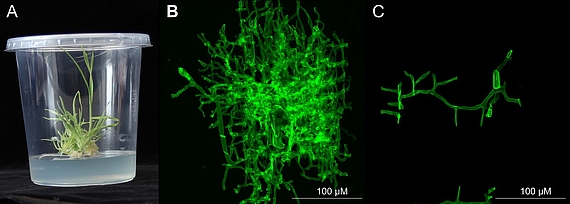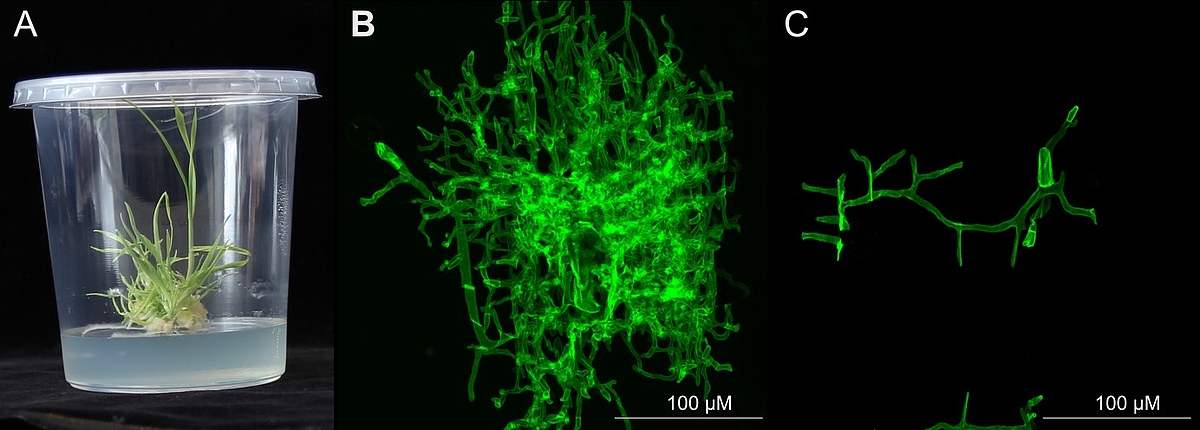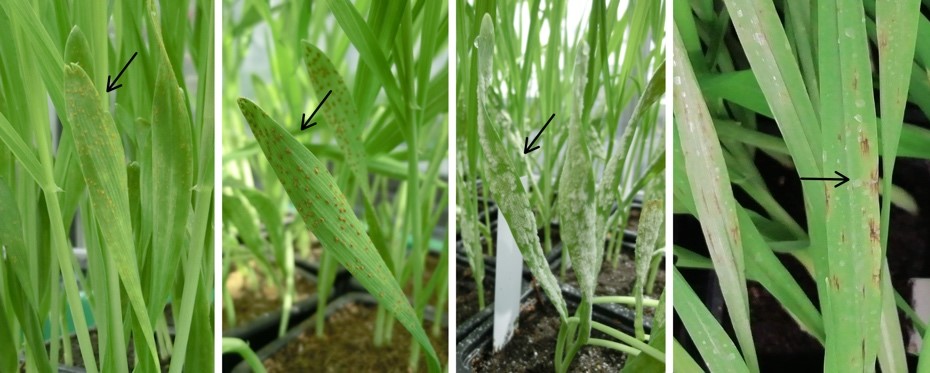The availability of nutrients is one of the basal prerequisites for plant pathogens to ensure a successful infection. Consequently, plant pathogens evolved diverse strategies to hijack the nutrient store of their host to support their own energy demand.
Our group is working with plant pathogenic fungi that infect barley and result in economically important yield losses every year (Figure 1).
Our goal is to uncover the nutritional strategies of these fungi in the plant and to develop new strategies for resistance mechanisms. Therefore, we are investigating different steps of the plant-fungus interaction including recognition of an infection, resulting signaling pathways, transcriptional reprogramming and altered activity of proteins that might be involved in the nutrient exchange with particular focus on sugar transporters (Figure 2).
To address our research questions, we regularly perform plant-pathogen infections, transcriptome studies or transient analysis of involved components in barley protoplasts or heterologous organisms. Additionally, our group is using a highly flexible modular cloning kit. This allows us to generate diverse molecular tools for genome editing, based on the CRISPR/Cas9 or TALE platform, for protein expression, for reporter gene studies and other applications. Finally, we established a protocol for barley transformation. This allows us to generate transgenic plants with specific features and to analyze their impact for plant susceptibility or resistance (Figure 3).











